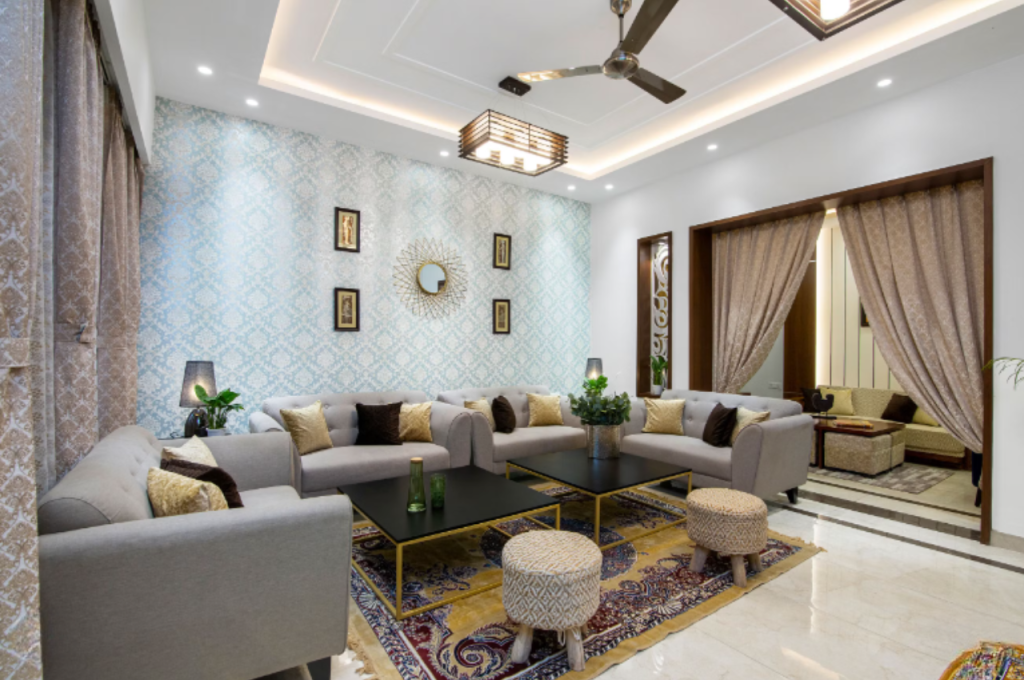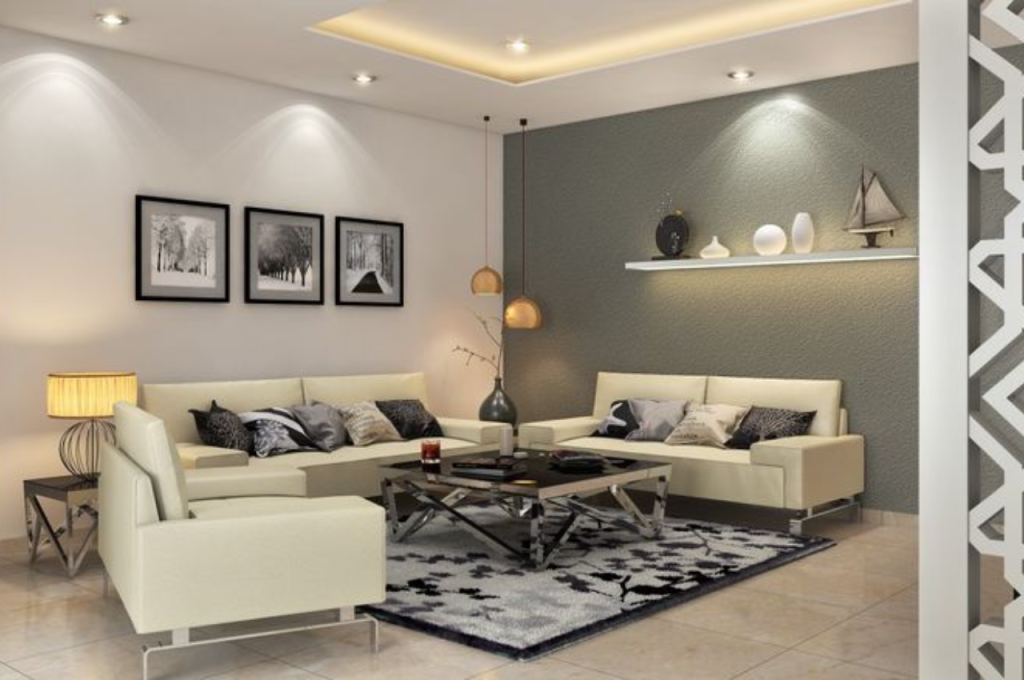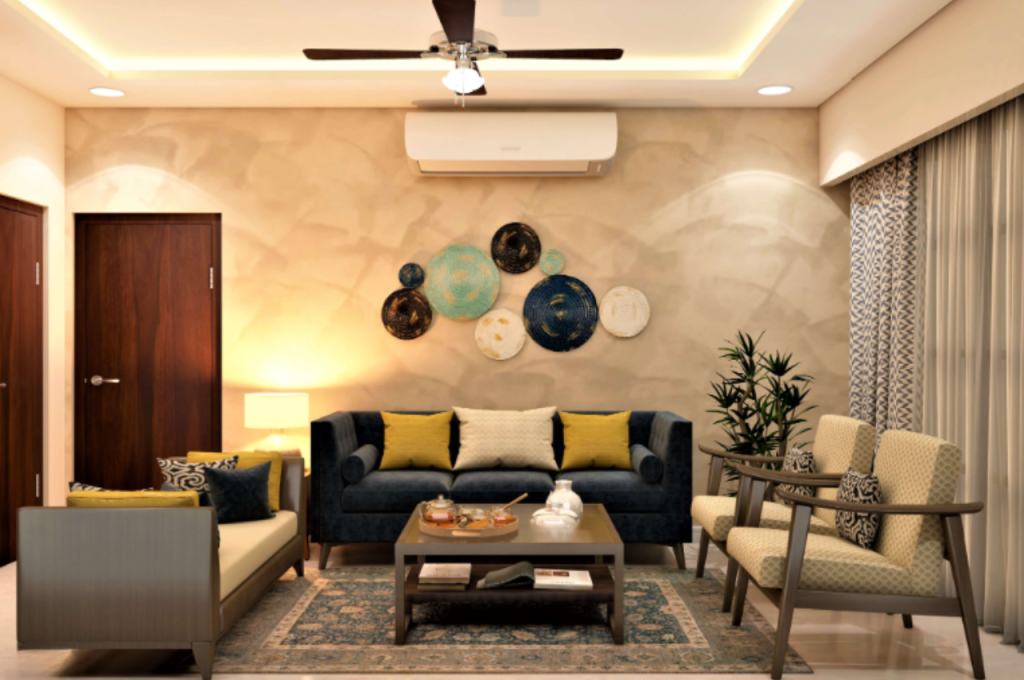A minimalist living room features clean lines, open spaces, and a simple color palette. It aims to promote a serene and clutter-free environment.
This design style emphasizes functionality and purposeful living, focusing on quality over quantity. By incorporating only essential furniture and decor, a minimalist living room exudes a sense of calm and sophistication. The key elements of minimalist design include minimal furniture, neutral colors, natural light, and a focus on functionality.
Achieving a minimalist living room involves decluttering, organizing, and carefully selecting pieces that serve both a practical and aesthetic purpose. Embracing simplicity and minimalism can create a harmonious and tranquil space for relaxation and rejuvenation.
The Concept of Minimalist Living
A minimalist living room embodies simplicity and elegance through decluttering and intentional design. The concept focuses on creating a space that promotes calmness and mindfulness by removing excess belongings and focusing on essential elements.

Origins of Minimalism
Minimalism originated as an art movement in the 1960s, emphasizing simplicity and abstraction. It later transitioned into a lifestyle philosophy centered around owning less and experiencing more.
Key Characteristics of Minimalist Living
- Simplicity: Embracing the motto “less is more” by keeping only essential items in the room.
- Clean Lines: Opt for simple and clean furniture designs to maintain a streamlined look.
- Neutral Colors: Choosing a minimal color palette such as white, beige, or grey to create a calming atmosphere.
- Functional Furniture: Selecting multi-purpose furniture pieces to maximize space and utility.
- Open Space: Allowing for ample negative space to foster a sense of openness and tranquility.
Design Elements in Minimalist Living Rooms
Design elements in minimalist living rooms focus on key aspects that create a clean, uncluttered, and functional space. Key design elements include neutral color palettes, sleek furniture with simple silhouettes, and minimalistic décor accents. By removing unnecessary items and focusing on essential furnishings, minimalist living rooms promote a sense of calmness and tranquility.
Neutral Color Palette
A minimalistic living room commonly sticks to a neutral color palette comprising whites, grays, and earth tones.
Functional Furniture Design
Minimalist living rooms prioritize functional furniture design that serves a purpose while maintaining simplicity.
Decluttering and Organization
Decluttering and organization are essential in minimalist spaces, ensuring everything has a designated place.
Creating A Tranquil Ambiance
With its clean lines, clutter-free spaces, and minimal decor, a minimalist living room creates a tranquil ambiance that promotes relaxation and serenity.
Creating a tranquil ambiance in a minimalist living room is pivotal in enhancing its serene and peaceful atmosphere. By incorporating natural light, using greenery and natural elements, and embracing simple decor, the space can exude a sense of calm and tranquility. Let’s explore how these elements can contribute to the overall ambiance of a minimalist living room.
1. Incorporating Natural Light: In a minimalist living room, natural light plays a crucial role in creating a tranquil environment. Large windows or strategically placed mirrors can maximize the flow of natural light, making the space feel airy and open. By allowing sunlight to fill the room, the ambiance becomes warm and inviting.
2. Use of Greenery and Natural Elements: Introducing greenery and natural elements into a minimalist living room can bring a touch of nature indoors. Incorporating potted plants, fresh flowers, or even a small indoor garden can infuse the space with a sense of tranquility. Natural elements such as wooden furniture and stone accents also add a calming, earthy vibe to the room.
3. Embracing Simple Decor: When it comes to creating a tranquil ambiance, less is often more in a minimalist living room. By opting for simple decor and decluttering the space, you can cultivate a serene atmosphere. Choose furniture with clean lines, neutral colors, and minimalistic designs to promote a sense of calm and relaxation.
By integrating these elements, a minimalist living room can become a sanctuary of tranquility, providing a peaceful retreat from the chaos of everyday life.
Smart Storage Solutions
A minimalist living room embraces smart storage solutions to keep the space clutter-free and organized. By utilizing sleek furniture, hidden storage compartments, and creative wall shelving, you can create a minimalist living room that is both visually appealing and functional.
Having a minimalist living room is not just about decluttering your space; it’s also about finding smart storage solutions that help maintain a clean and organized environment. By implementing various techniques and furniture designs, you can make the most of your minimalistic living room while keeping it stylish and functional.
Multi-functional Furniture
Multi-functional furniture is a key element in minimalist living rooms with smart storage solutions. These pieces serve dual purposes, allowing you to optimize your limited space while providing clever storage options. Think about incorporating coffee tables with built-in drawers or ottomans that open up to reveal hidden compartments. These furniture pieces not only provide extra storage but also contribute to the overall aesthetics of your living room.
Hidden and Seamless Storage
One of the secrets to achieving a minimalist living room look lies in hidden and seamless storage solutions. Opt for furniture like wall-mounted shelves, cabinets, or even floating shelves that blend seamlessly with your walls. These storage options keep your belongings out of sight while maintaining the simplicity and clean lines of your living room. Investing in built-in wall units can also create a sleek and streamlined look, eliminating the need for additional storage furniture.
Vertical Space Optimization
When it comes to smart storage solutions, vertical space optimization is essential in a minimalist living room. Make the most of your walls by installing high shelves or open wall units that reach up to the ceiling. This way, you can utilize every inch of available space, creating storage opportunities for books, decor items, or even everyday essentials. Additionally, consider using hanging organizers, hooks, or wall-mounted pegboards to keep smaller items organized and easily accessible.
Choosing Minimalist Decor Accessories
A minimalist living room is all about embracing simplicity and decluttering your space. It’s about creating a serene and organized environment where every item serves a purpose. When it comes to choosing minimalist decor accessories, quality over quantity should be your guiding principle. By focusing on statement pieces and integrating textures, you can create a visually appealing and harmonious space that exudes tranquility.

Quality Over Quantity
When it comes to minimalism, the emphasis is on acquiring fewer but well-made pieces. Instead of cluttering your living room with multiple accessories, opt for a few high-quality ones that truly resonate with your style and personality. Choose decor items that are made from durable materials and have a timeless design, ensuring that they will stand the test of time. By prioritizing quality over quantity, you can create a space that feels intentional and refined.
Statement Pieces
Statement pieces are essential in a minimalist living room. These are the items that catch the eye and create a focal point in the space. It could be a unique piece of artwork, a modern lighting fixture, or a sculptural furniture item. These statement pieces add visual interest and personality to the room without overwhelming the simplicity of the overall design. Select one or two statement pieces that truly resonate with you and let them shine in your living room.
Integrating Textures
Minimalist decor doesn’t mean your space has to be devoid of texture. Integrating textures is a great way to add depth and visual interest to your living room. Consider adding a plush area rug, cozy throw pillows with different fabric textures, or a woven basket for storage. These textural elements create a sense of warmth and tactility without detracting from the minimalist aesthetic. Be mindful of choosing textures that complement each other and maintain a cohesive look.
Maintaining Minimalist Living Spaces
A minimalist living room is characterized by simplicity, functionality, and a clean aesthetic. It aims to create a serene and uncluttered space that promotes calmness and mindfulness. To maintain a minimalist living room, it’s important to adopt regular decluttering practices, cultivate mindful consumption habits, and strike a balance between functionality and aesthetics.
Regular Decluttering Practices
Regular decluttering is essential for maintaining a minimalist living room. It involves frequently assessing the items in the space and removing any unnecessary or redundant items that disrupt the minimalist aesthetic. This can be achieved by implementing a simple system of regular cleaning, reorganizing, and donating or disposing of items that no longer serve a purpose in the room.
Mindful Consumption Habits
Cultivating mindful consumption habits is crucial for sustaining a minimalist living room. This involves mindfully selecting and purchasing items for the space, considering their utility, durability, and visual appeal. By adopting a conscious approach to consumption, individuals can minimize the inflow of new items and reduce the likelihood of accumulating unnecessary possessions in the living room.
Balancing Functionality and Aesthetics
Balancing functionality and aesthetics is the cornerstone of a successful minimalist living room. It necessitates careful consideration of the functional purpose of each item in the space, while also ensuring that it contributes to the overall visual harmony. This approach encourages individuals to select multifunctional and thoughtfully curated pieces, creating a living room that is both visually appealing and practical.
Benefits of Embracing Minimalism
In a world filled with distractions and clutter, minimalism offers a refreshing antidote. Embracing minimalism in your living room can have a myriad of benefits that extend beyond just aesthetics. Let’s delve into the advantages of adopting a minimalist approach to your living space.
Reduced Stress and Anxiety
A clutter-free environment leads to a more peaceful mind. The simplicity of a minimalist living room can help calm your thoughts and create a sense of tranquility. Less stuff means less to worry about.
Enhanced Focus and Creativity
Minimalist spaces promote mental clarity and creativity. With fewer distractions in your living room, you can focus better on the tasks at hand and unleash your creative potential. Simplifying your surroundings can inspire new ideas.
Environmental Sustainability
Opting for minimalism reduces your ecological footprint. By consuming less and choosing quality over quantity, you contribute to a more sustainable lifestyle. Minimalist living rooms emphasize longevity over excessive consumption.
Personalized Minimalist Living
Adapting Minimalism to Individual Styles: Minimalist living is about simplicity, but it doesn’t mean you have to sacrifice your style. You can adapt minimalism to reflect your unique taste through intentional design choices.

Incorporating Sentimental Items: One key aspect of personalized minimalist living is incorporating sentimental items into your space. These items add warmth and character without cluttering your living room.
Finding Joy in Simplicity: Embracing a minimalist lifestyle allows you to find joy in simplicity. Focus on what truly brings you happiness and let go of excess possessions that don’t serve a purpose.
Frequently Asked Questions
Frequently Asked Questions: Minimalist Living Room
What is a minimalist living room?
A minimalist living room is a design style that focuses on simplicity and decluttering. It features clean lines, minimal furniture, and a neutral color palette. The aim is to create a serene and calm space that promotes relaxation and mindfulness.
How do I create a minimalist living room?
To create a minimalist living room, start by decluttering and removing unnecessary items. Choose furniture with simple and clean designs. Stick to a neutral color scheme and incorporate natural materials like wood and metal. Keep decorations and accessories to a minimum for a clutter-free and peaceful atmosphere.
What are the benefits of a minimalist living room?
A minimalist living room offers several benefits, including reduced stress and anxiety, improved focus and productivity, and easier maintenance. It helps create a sense of calm and serenity, providing a peaceful sanctuary to relax and unwind after a hectic day.
Additionally, it promotes a more mindful and intentional way of living.
Can a minimalist living room still be cozy?
Yes, a minimalist living room can still be cozy. Use soft textures and comfortable seating to create a warm and inviting atmosphere. Incorporate plush rugs, throw blankets, and pillows for added comfort. Opt for warm lighting and add personal touches like artwork or photographs to make the space feel more personal and cozy.
Conclusion
A minimalist living room prioritizes simplicity, functionality, and tranquility. By focusing on clean lines, neutral colors, and purposeful furniture, a minimalist design creates a serene and uncluttered space. Embracing a less-is-more approach can help you achieve a peaceful and harmonious living environment that promotes relaxation and mindfulness.
Incorporating minimalist elements into your living room can bring a sense of calm and balance to your home.

